
Shopify and WordPress. Great Things Every Merchant Must Know.

You’ve probably heard good and bad things about both Shopify and WordPress. With WordPress CMS (Content Management System), you’ll need to install additional plugins like WooCommerce to build the online store. In this article we will cover the best things from both software platforms and you can decide more easily what’s the most relevant solution for your business at this time.
Table of Contents
- A Few Words about WooRockets and SellerSmith
- What is WordPress? What is Shopify?
- Storefront Design: Shopify and WordPress Themes
- Searching for Functionality. WordPress Plugins and Shopify Apps.
- Security and Updates.
- Shopify and WordPress Monthly Cost
- Wrapping up
A Few Words about WooRockets and SellerSmith.
Back in January 2016, me (Tony) and some of our teammates did some research related to ecommerce. After the research and countless hours of brainstorming, we decided to try a WooRockets.com project. The goal of this project was providing solutions for merchants including WooCommerce theme and plugins. erchants want to open online stores and our mission was providing “tools” to support those merchants. The result of 9 months was Nitro WooCommerce theme being released with 20+ home demo stores and built-in plugins. From September 2016 until now Nitro WooCommerce theme has been used on over 3,500+ stores. The Nitro theme still works fine with the latest version WordPress and WooCommerce.
We gained valuable experience and customers insights when making this product and providing support to WooCommerce merchants.
Around January-February 2017 we decided to face a new challenge with the Shopify platform. We started our Shopify journey with custom service projects on Upwork then moved to Shopify Experts. From Feb 2017 until September 2018 we created the SalesHunter Shopify theme. We built it from scratch because we could have more control over our code and wouldn’t need to rely on other themes framework, but still following Shopify coding standard. We worked hard in the summer of 2017 with the release of PageFly Shopify app beta. Later on, it was officially approved on Shopify App store in September 9, 2017. Today we have the privilege to serve over 10,000+ Shopify merchants from Shopify Basic to Shopify Plus plans.
We have gained the experience with making both Shopify themes and apps. Now, let’s review the good things of both software products.
What is WordPress? What is Shopify?
WordPress is the standalone software which you’ll need the hosting provider to install the to have the website. To build the online store, you’ll need to additionally install WooCommerce WordPress plugin. So with WordPress, WooCommerce and hosting provider you’ll have the complete package. Just keep in mind that you’ll still need to install WooCommerce payment gateway extension to accept payments.
Make sure you register the account at www.woocommerce.com then you’ll find the WooCommerce plugin in the Downloads area. WordPress and WooCommerce themselves are free, however please keep in mind that you’ll also need to find a hosting provider. We’ll cover the cost part at the end of this article.

Now, let’s move on with Shopify.
Shopify is the ecommerce hosted platform that helps you build the online store and accept payments. Shopify is based on SAAS (Software As A Service) business model which means you actually “rent” the software with the support on a monthly or yearly basis (there is no commitment to pay for a year). You don’t need a hosting provider to make Shopify work. When you subscribe to one of Shopify plans, you already get the hosting part with the updates and maintenance included.

Storefront Design: Shopify and WordPress Themes
When it comes to the customization of your storefront you might often hear about the flexibility with WordPress itself, and that’s actually true. Below is the product page customization of Nitro WooCommerce theme. We have invested countless hours of learning and intensive coding to make Nitro go live. WordPress with WooCommerce is quite a flexible system which allowed us to customize all the pages of an online store.
If the function is simple like the “quick product view”, in Shopify you might see a Shopify app to solve such a problem. In WooCommerce you can easily build and integrate into the theme itself.
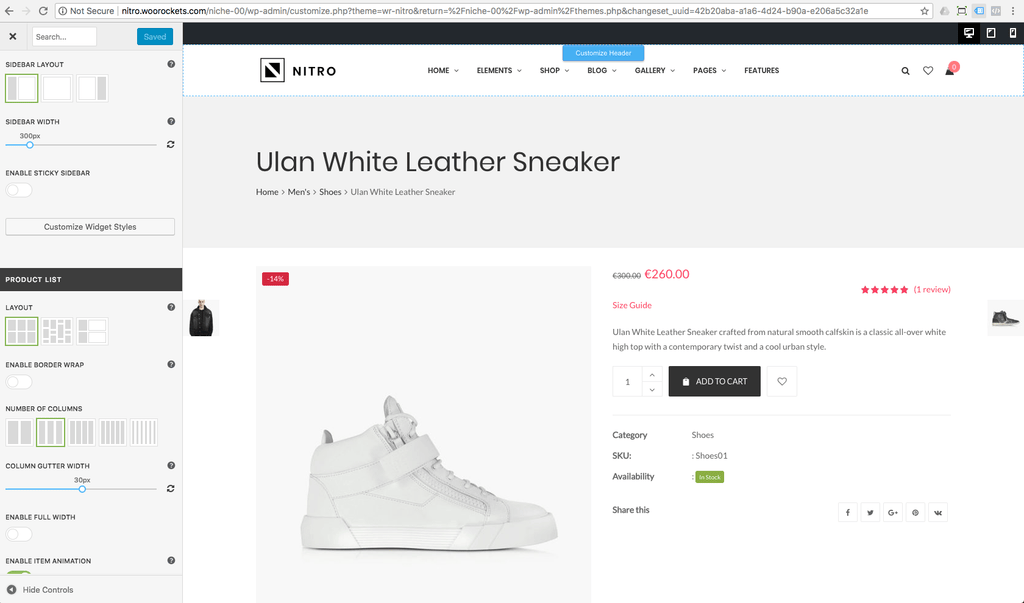
With Shopify ecommerce platform the storefront has its own limitations. All Shopify themes follow the liquid template language standard. In Shopify theme customizer, each content block is called a “section” and you can add and easily design that part. Despite its limitations, it’s still really easy to use the control panel.

Shopify Themes from the official marketplace might have some limitations, but themes from 3rd party providers prove the opposite. You can find the Turbo Shopify theme as an example with rich features. However, the cost of Turbo might be quite expensive at $350.

Another example are themes sourced from from ThemeForest marketplace. This is the biggest one in the web industry and Shopify as well. You can find Shopify themes at affordable prices. However, when you choose a theme there please keep in mind to check the reviews and how many sales it has. This will be the minimum indication of the quality of a theme.
Fastor Shopify theme caught my attention. It has 82+ pre-designed home page designs and different product and collection page layouts. Give it a try.
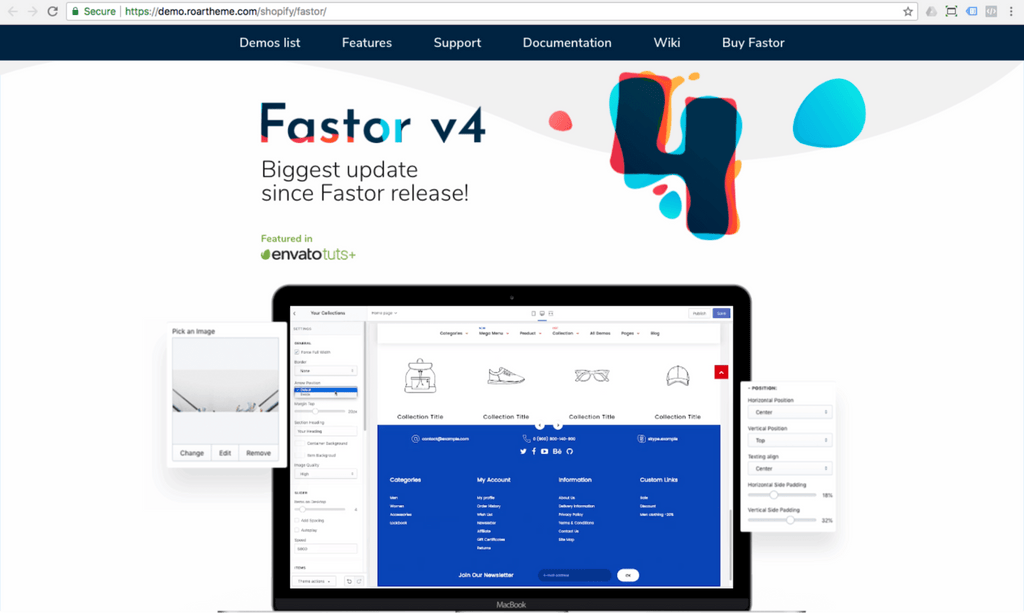
Wrapping up with the storefront customization, only you know what you need. If you are looking for the professional Shopify theme consider SalesHunter premium theme made by SellerSmith. The price is $180, BUT if you are just getting started, register Shopify 14 days free trial then we’ll give you the theme at absolutely no cost. Just use this Shopify signup link. When you finish the registration, email happytohelp@sellersmith.com then we’ll send you the theme installation file.

Searching for Functionality. WordPress Plugins and Shopify Apps.
WooCommerce Marketplace
We started with WooCommerce and WordPress before Shopify, so looking at WooCommerce you can find plenty of plugins on the marketplaces and from independent developers. The first place that comes to my mind is the official WooCommerce extensions market. The code quality is proven to be great and stability is top-notch. However, the price might be a little bit higher if we compare with the market. You can find 291 WordPress plugins for WooCommerce on this website.
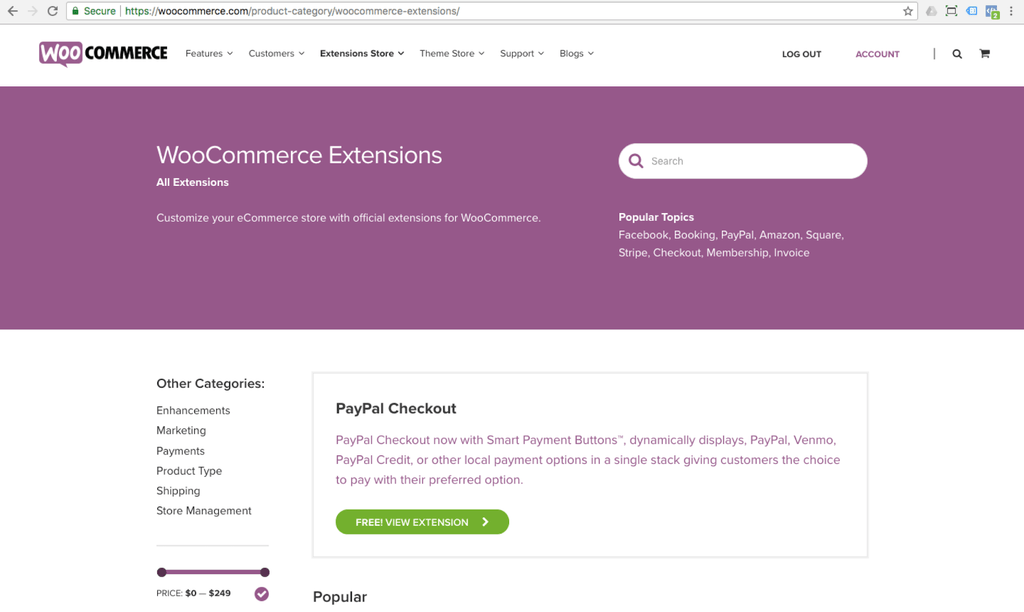
Wordpress.org
Going further with WordPress plugins for WooCommerce. You can notice the biggest place to find is on the Wordpress.org website. There are so many WordPress plugins, so in order to find the WooCommerce type you’ll need to use the WooCommerce tag https://wordpress.org/plugins/tags/woocommerce/. You will see a list of 186 pages with 14 Woo plugins on the each page, so in summary there is 2,600+ WooCommerce plugins.
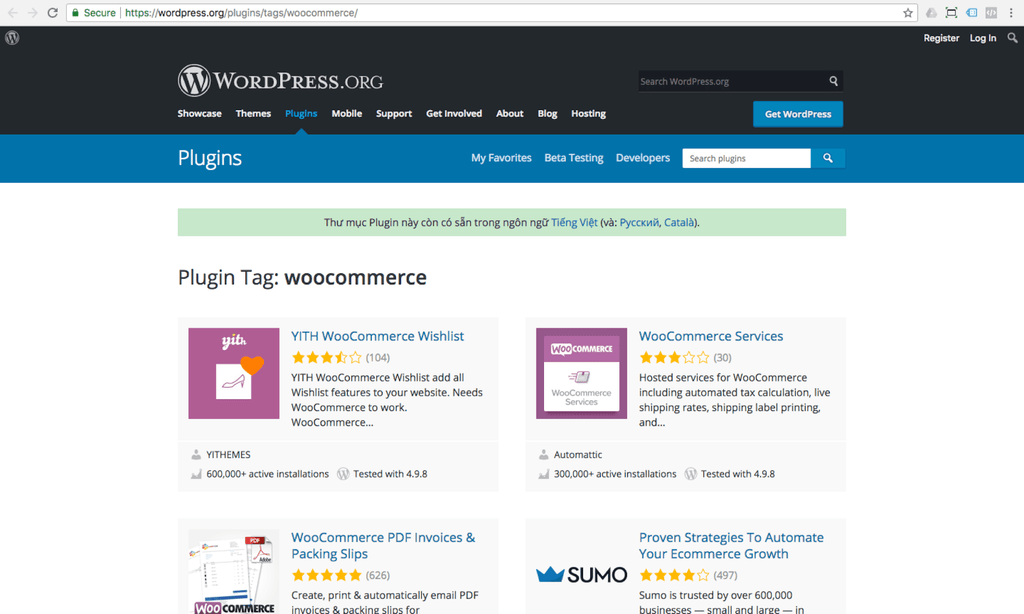
Codecanyon
The last place is the Codecanyon marketplace. You can find plenty of choices there. You can find 1,450+ WooCommerce extensions. But don’t let numbers to lure you in, double check the latest version update and reviews for the plugin.
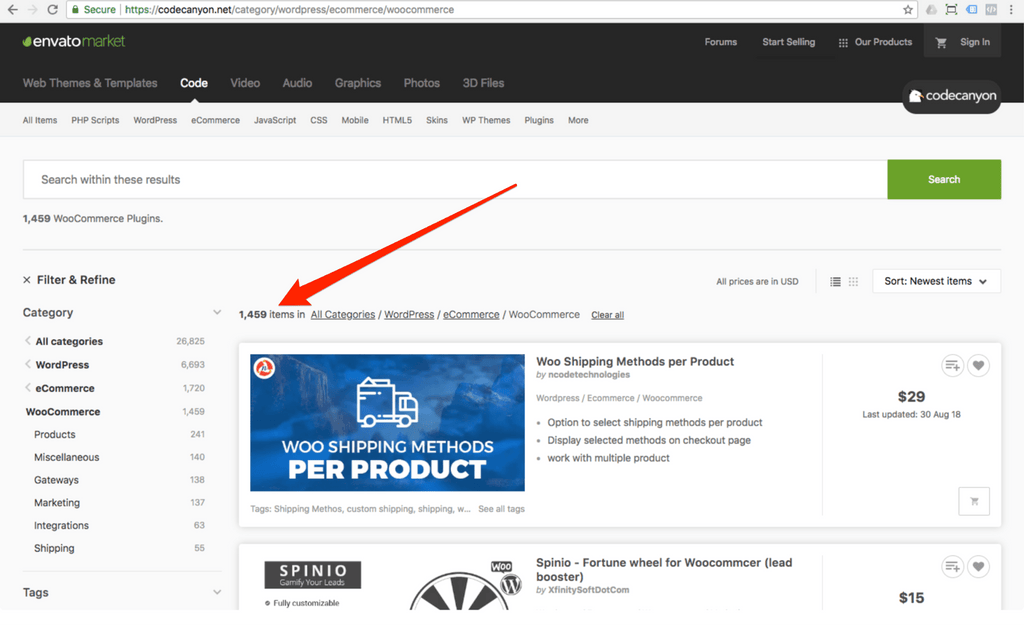
With Shopify there is only one trusted place you can find applications and it’s the official Shopify Apps marketplace. It’s like the app store for your iPhone.
Shopify Marketplace
Visit https://apps.shopify.com/ and you get access to 2,000+ free and paid Shopify apps to serve your needs with your Shopify store. The number of apps is growing quite quickly from year to year. The market is actually defined by big players and independent freelance developers. Reviews are the cornerstone there and to be approved on the app store is really hard. Trust me, we have tried to submit our app and through many check levels it was finally approved by September 2017. It’s the PageFly Shopify page builder app.

For the each problem with the functionality you can find five or more solution providers. Each one has unique features and support levels. It creates tough competition and makes the price for the functionality affordable. Let’s take a look at an example with SEO Shopify apps category.
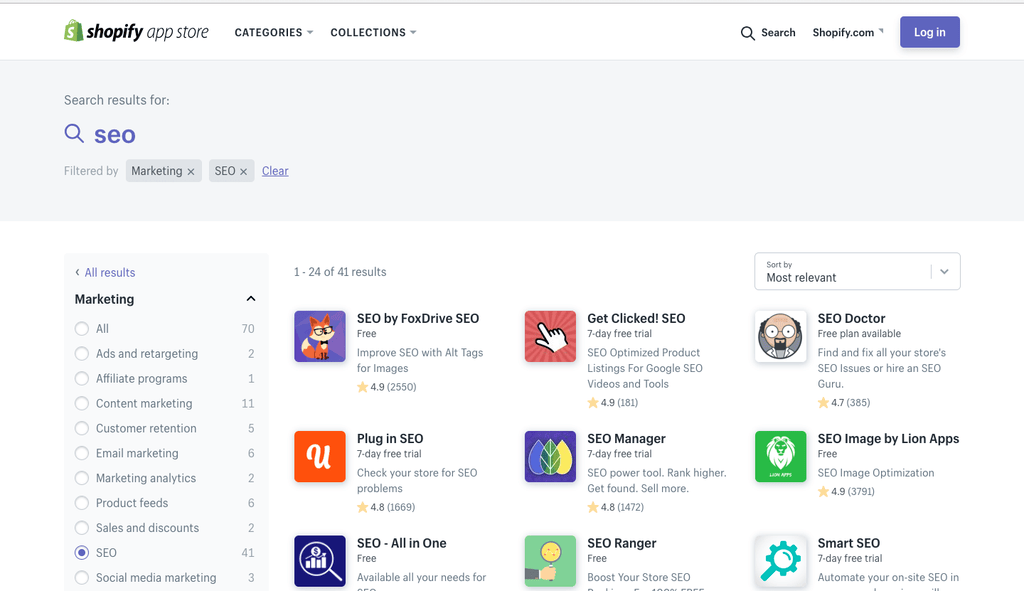
When you choose the right app pay attention to the pricing plan. Usually on Shopify app store the app providers charge based on the usage plan. The good company is the one who has a free plan and money back guarantee. For example, PushOwl Shopify app has the free plan and money back in the case you are not happy.

Reviews are really hard to fake with the Shopify app store, so rest assured when you read it. You can realize that developers and customer success staff worked hard to satisfy the Shopify merchants needs.
With Shopify apps you don’t need to worry about the compatibility with Shopify. There might only be some cases with the conflict between the Shopify app and the theme you’re using. The safe way to avoid such issue is using the Shopify themes directly from the themes store.

Security and Updates.
Luckily me and my team had experience with using and building solutions based on both WordPress / WooCommerce and Shopify. From our experience there is no ideal or perfect solutions. Each system has its own issues mostly related to the third party partners.
Shopify Status page
With Shopify you can find this useful website informing about the status of the system. The website is called https://status.shopify.com/ and Shopify uses the service from statuspage.io. It’s quite a convenient way to see how Shopify is stable or not. Moreover, you can subscribe to the updates if there is something wrong. I have personally subscribed and see updates were coming with bugs happening and their fixes. Usually Shopify resolves the issue anywhere from minutes to a few hours.
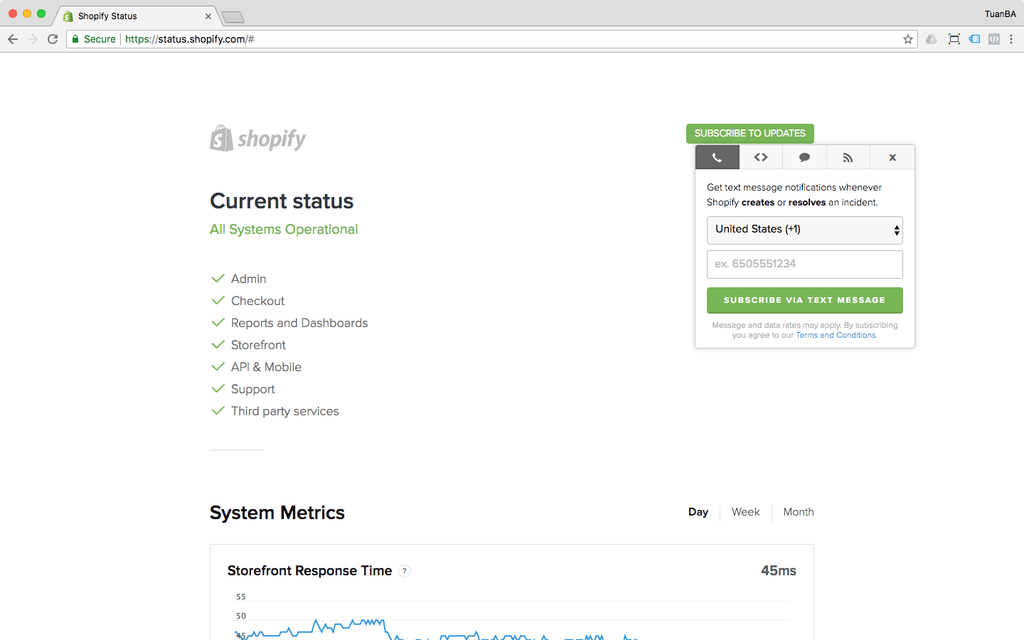
The platform is relatively stable and conflicts might be from 3rd party solutions provider related to the app and theme. Choosing the Shopify themes and apps from the official marketplaces would guarantee you the responsive support and solutions that work. If Shopify updates something, rest assured it’s carefully tested with Shopify themes and apps.
What about WordPress and WooCommerce Security?
Since WordPress itself is the “paradise” for developers with customization of the website, this means you would have more chances to have conflicts and compatibility issues between WordPress / WooCommerce / Theme / Plugin and hosting. There is no way to avoid such conflicts because more customization would create more coding scenarios that would be hard to debug and fix.
WooCommerce is distributed as open source which means the code is available for public access. From the image below you can see the changelog of WooCommerce and the history of releasing new versions.
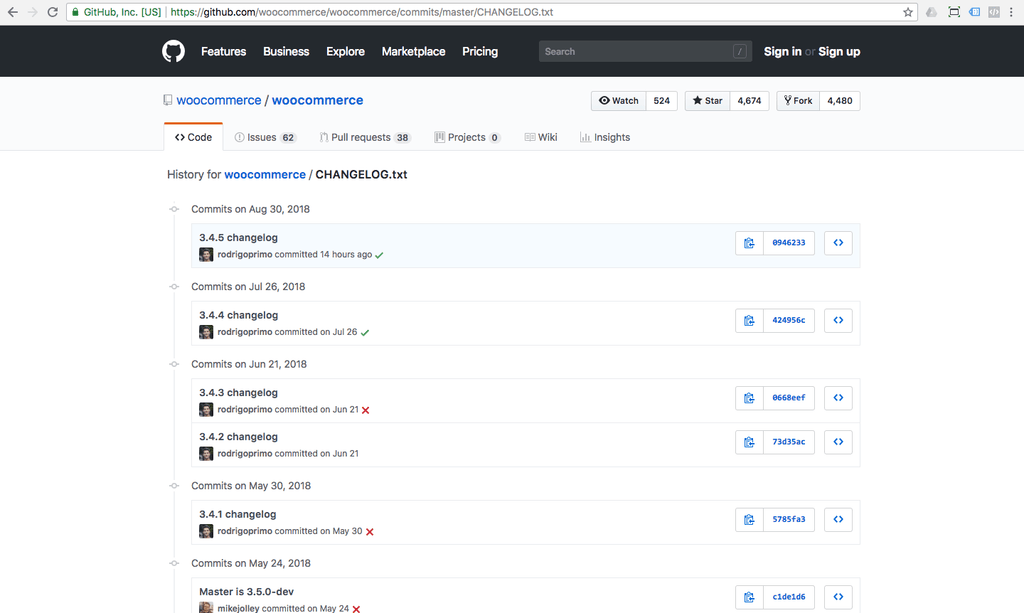
What about WordPress? Well, as you can see core WordPress developers are working hard to release security and maintenance versions. With the newest versions you as the merchant need to take care about the updates of the system.

Looking at this part of your WooCommerce store there is WooCommerce theme. As mentioned earlier we have made Nitro WooCommerce theme and still making sure that it’s compatible with the latest version of Wordpress and WooCommerce.
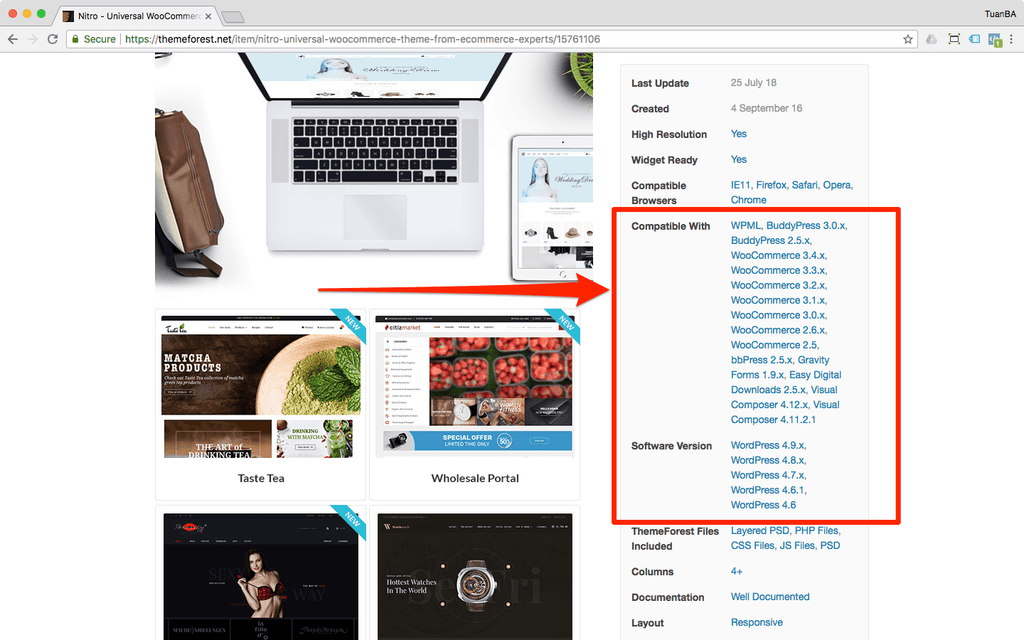
Making sure that the combination between WordPress / WooCommerce / plugins and theme is up to date is critical. You’ll need to think on hiring a WordPress developer to take care of this part or take care of it yourself. There are also niche service providers who make sure about your online store maintenance https://wpbuffs.com/ is looked after. Just keep in mind it’ll cost you both money and time.
Thinking back about Shopify… there won’t be such issues because the maintenance and security is taken care of by Shopify. So when you decide to open the online store with Shopify you won’t need to worry about “latest version” of system update.
Shopify and WordPress Monthly Cost
Let’s Start with WordPress / WooCommerce
The Hosting Provider Cost
As mentioned earlier to make WordPress work, you’ll need the hosting provider. It’s like “home” for your store and where all data is kept. With the hosting providers there is the big amount of choices. From the cheapest up to the most trusted ones. For example, the Bluehost hosting provider has the WooCommerce hosting solution from $6.95 up to $12.95 per month. If you want to host your WooCommerce store on WordPress.com, the price will be from $25 / month and billed annually.
I haven’t found the monthly subscription yet...
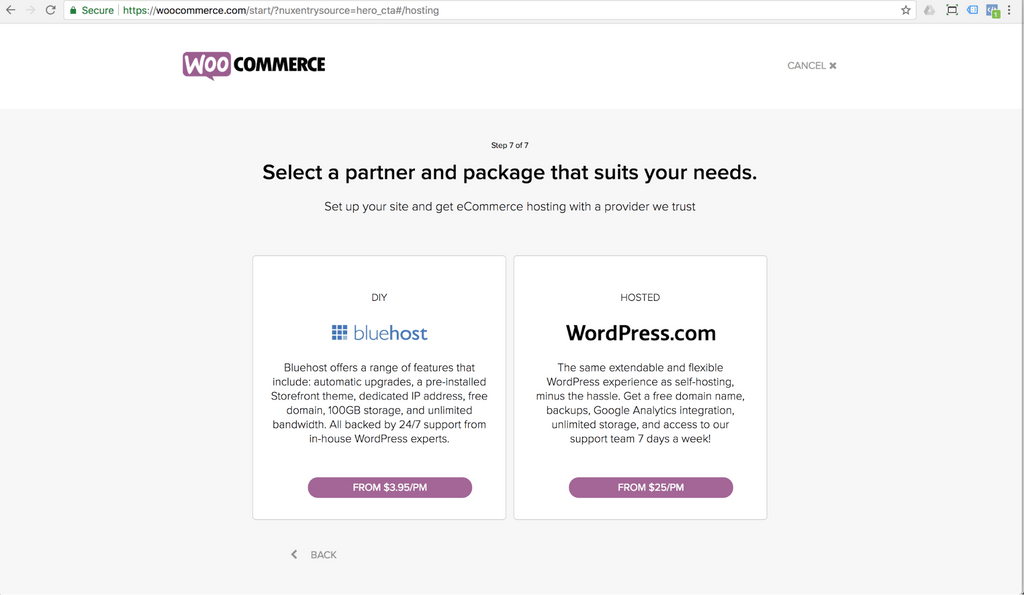
I have visited WordPress.com site and registered the account. The plans range range from ‘Personal’ to ‘Business’s and the business plan is the one which you can use with WooCommerce.
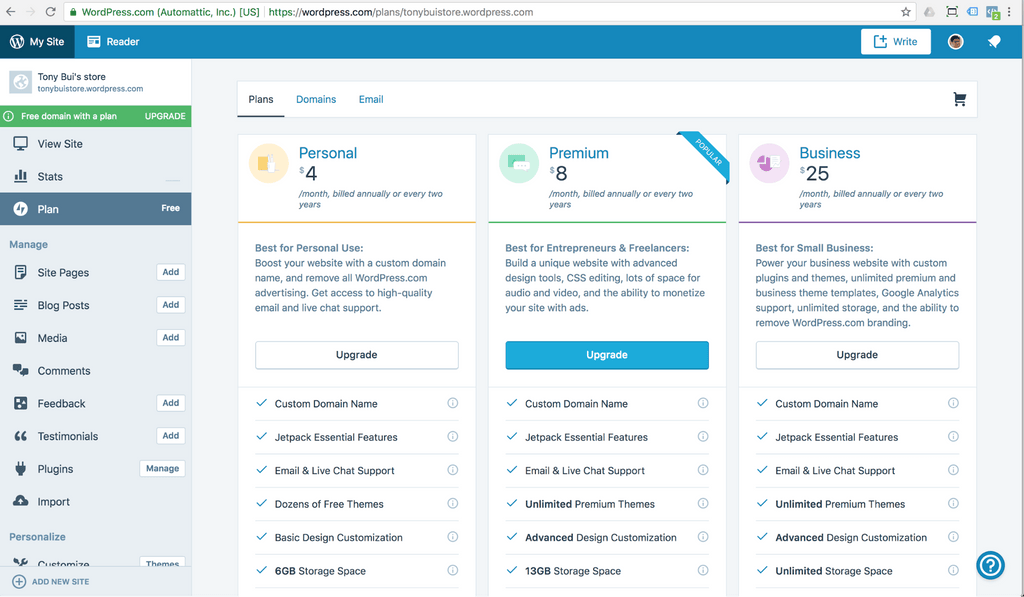
The Business plan gives you the following features. So the “Business” plan is the highest and presumably designed for store owners.
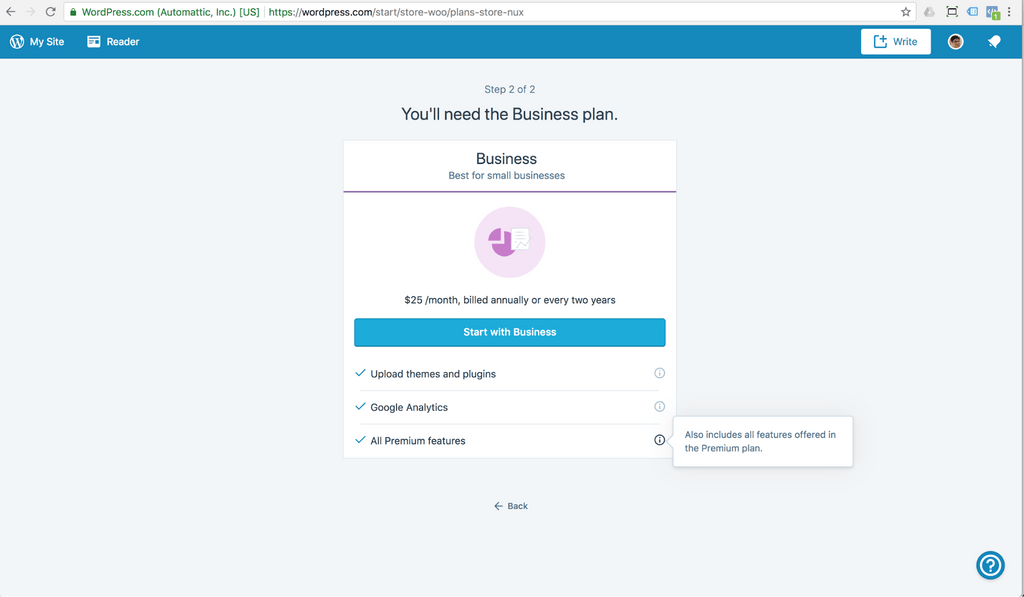
As the alternative hosting provider to give you more insights I have decided to go further to the check out Bluehost hosting provider. Here is their pricing and again, NO MONTHLY subscription plan. So you’ll pay ahead for a year.
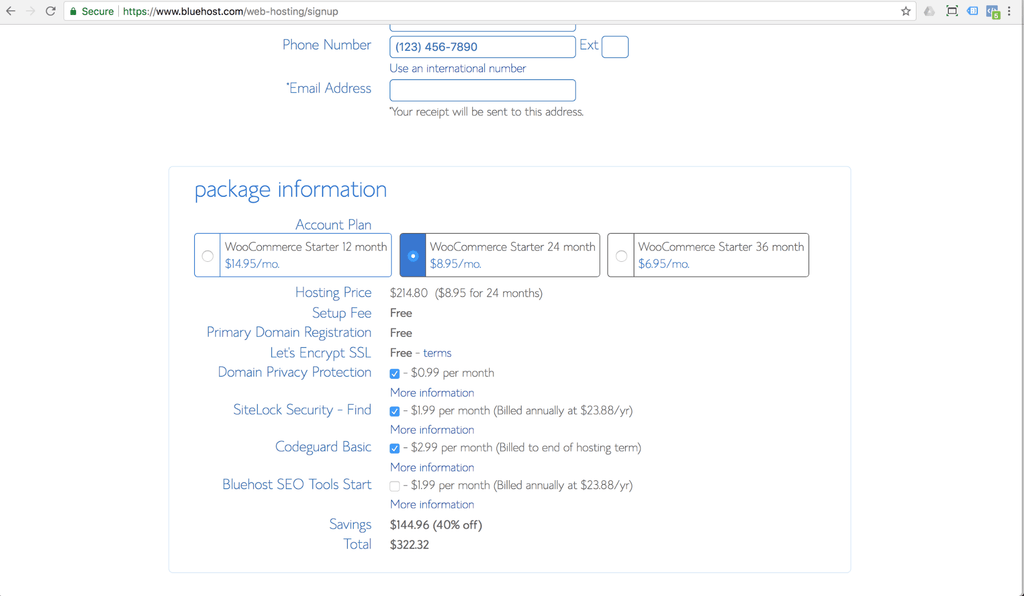
To make sure that my assumption is correct I have contacted to Bluehost then the response as you see below. No SSL and no CDN. CDN??? Content Delivery Network service in short.
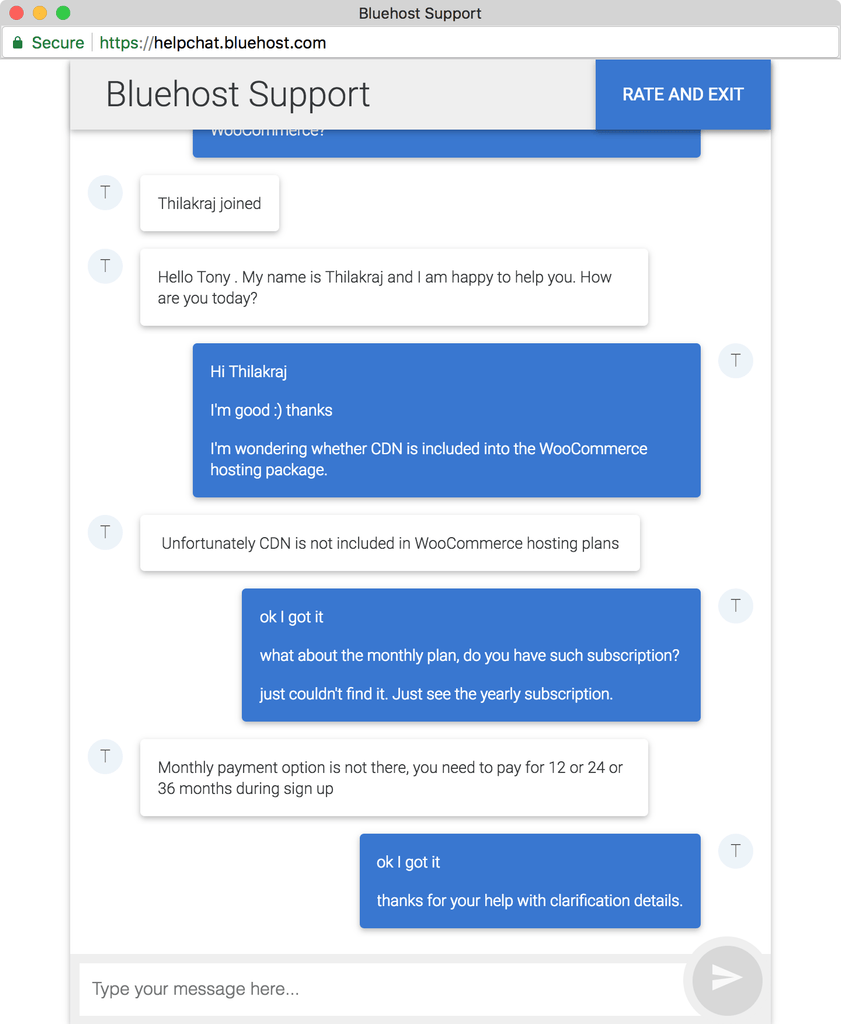
CDN, does it really matters?
“A content delivery network (CDN) is a system of distributed servers (network) that deliver pages and other Web content to a user, based on the geographic locations of the user, the origin of the webpage and the content delivery server.” - webopedia.com
If your online store has a CDN, the content of your store will be loaded much faster for your customers based on GEO location. This feature usually available at the additional cost and from 3rd party services. When you run the online store every second matters and seriously affects the conversion rate. Hubspot has a great infographic explaining with case studies. You can learn more about it here.
With CDN provider I have taken into account CloudFlare and the pricing is around $20 up to $200 (this plan is designed for ecommerce store).\
The Domain Name
If you chose the WordPress.com service, the domain .com will be provided for free. If you refused choosing the domain name, the store will be hosted on https://yourstorename.wordpress.com.
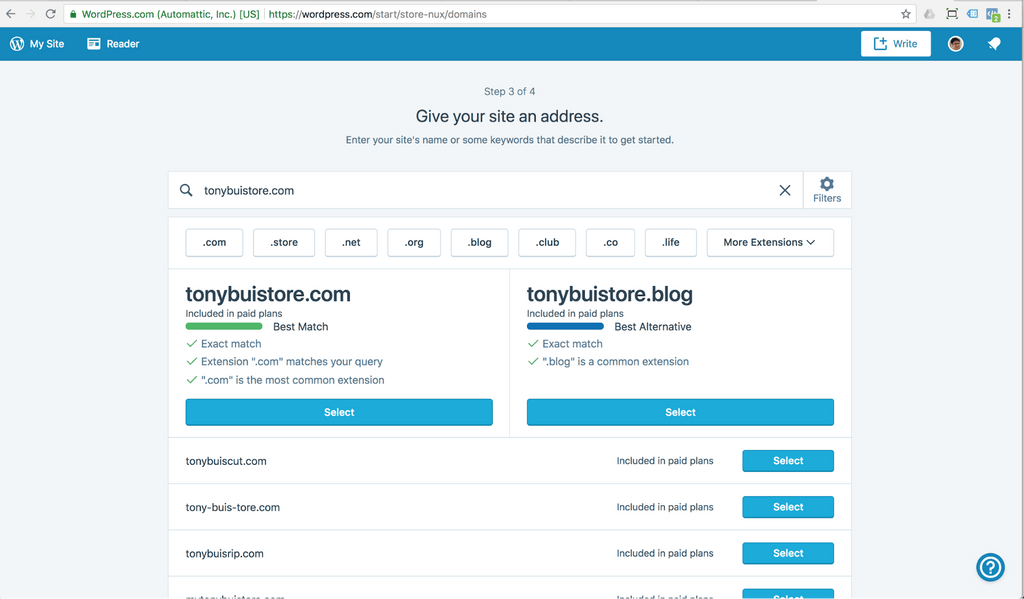
The SSL Cost
SSL is Security Sockets Layer. It’s the security certificate for establishing the security link between your online store and the web browser. With the latest version of Google Chrome browser update if you’re not using SSL certificate, the web browser would warn users that they may be unable to trust the site.
With Bluehost provider the SSL certificate is included. It all depends on the hosting provider, so just keep in mind that you’ll need to take this into account.
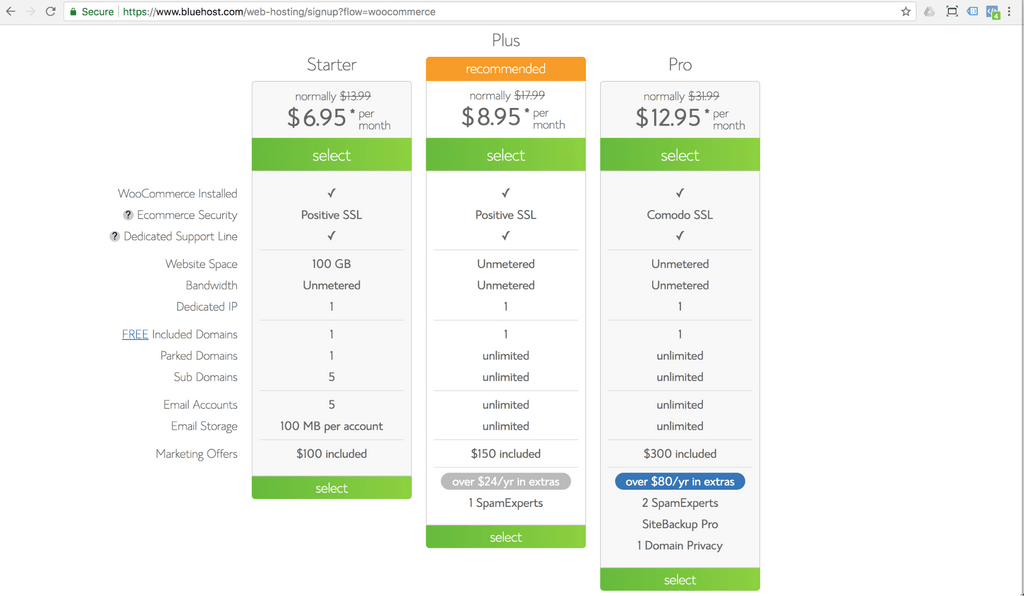
In summary, with WooCommerce you’ll have to pay (if you choose Bluehost):
- Hosting ~ $320 per year (no way to pay monthly)
- SSL - included
- CDN - additionally $20 (for simple site), for ecommerce it’s around $200.
- Domain name - included.
In short $340.
Now, let’s Turn to Shopify Monthly Cost Review
The concept of SAAS business model as mentioned earlier is about providing you a solution that comes with “all-in-one” package. You don’t need to worry about the technical stuff meaning “tool” to build your online store. So the monthly or yearly cost of Shopify is a quite predictable as at Shopify pricing page. It starts from $29 up to $299 per month. For the yearly or 2-years plan you can save 10% or 20%. There is no hidden fee and it’s not necessary to pay for a year ahead.
When you subscribe to one of Shopify plans you get the hosting already with unlimited bandwidth plan. CDN and SSL certificates are included in all Shopify packages. Once again it helps you as a Shopify merchant to focus on your business. The technical part will be taken care of by Shopify.
What about the Domain Part?
If you haven’t decided with the best name for your store, the default store domain will be https://yourstorename.myshopify.com. If you consider to buy the domain name directly from Shopify the cost will be $14 / year. Alternatively you can buy the domain name from another domain provider, for example at Namecheap the price is $10.98 / year.

The Shopify Pricing Structure
There are three main plans called Basic Shopify, Shopify and Advanced Shopify. Shopify Plus is designed for enterprise businesses, and Shopify Lite for Facebook merchants (no online store available).
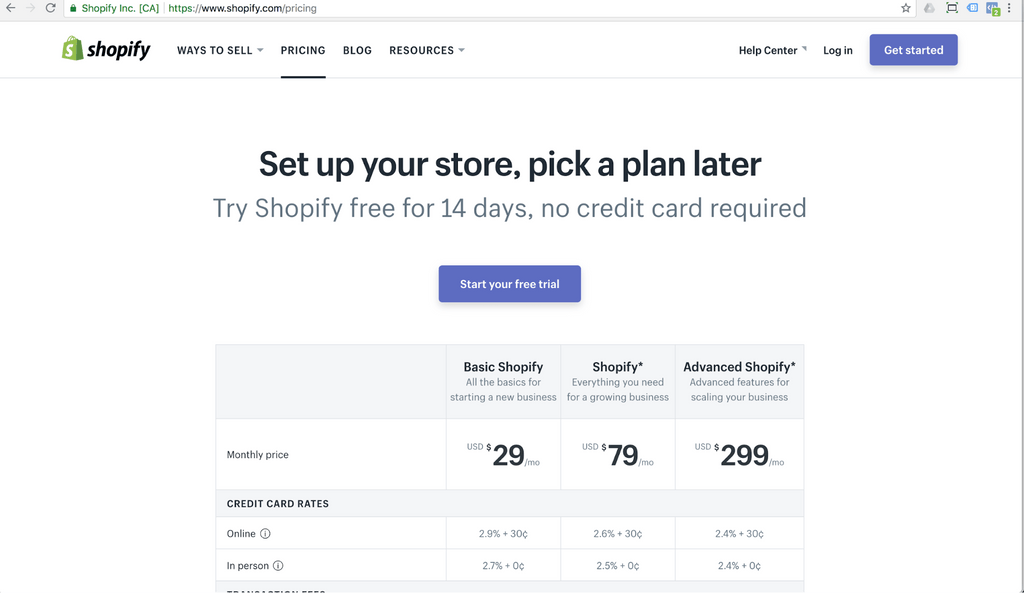
You can learn more about Shopify plans difference via detailed article review to get more insight.
- Hosting ~ included
- SSL - included
- CDN - included and you get PCI compliance secure level 1.
- Domain name - $11
- Shopify Plans - $29 - $299 monthly.
The yearly cost will be around $312 + $11 (for domain) which will be $323.
You can open the real business just starting from $29 and a 14-day free trial (if you need more trial time, find a Shopify partner then ask for this exclusive benefit). To register the Shopify account and setup store you don’t even need the credit card. It’s an easy way to give a try with Shopify and check whether it fits your business.
Wrapping up...
When you decide with choosing the ecommerce solution for your online store seriously take into account the time you spend on research, and account registration. Then follow with the time you’ll need to think on the first investment. As mentioned earlier, you can start with Shopify without the credit card and monthly subscription base. As for WooCommerce with the hosting provider you’ll need to pay at least for a year ahead. If you’re new to ecommerce and the safe and affordable way to build online store is with Shopify. In the case if you need more customization ability consider WooCommerce plugin.



